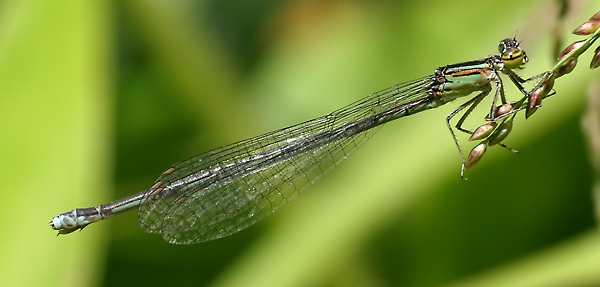Interactions
Damselflies share their littoral,
aquatic habitat with dragonflies and mayflies;
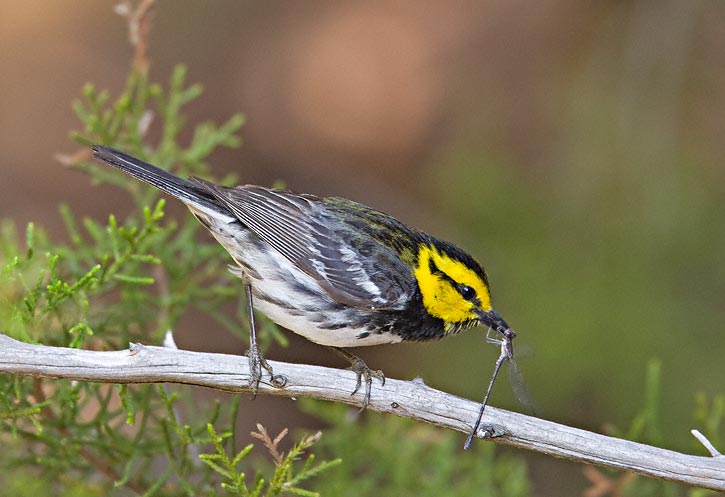 they
all belong to the same Order: Odonata and have similar
environmental needs. Damselflies rarely
compete with dragonflies for food or reproduction sites
because dragonflies are much larger than damselflies.
Mayflies have a relatively short adult life stage, so
they do not interfere with the damselflies much.
they
all belong to the same Order: Odonata and have similar
environmental needs. Damselflies rarely
compete with dragonflies for food or reproduction sites
because dragonflies are much larger than damselflies.
Mayflies have a relatively short adult life stage, so
they do not interfere with the damselflies much.
Although d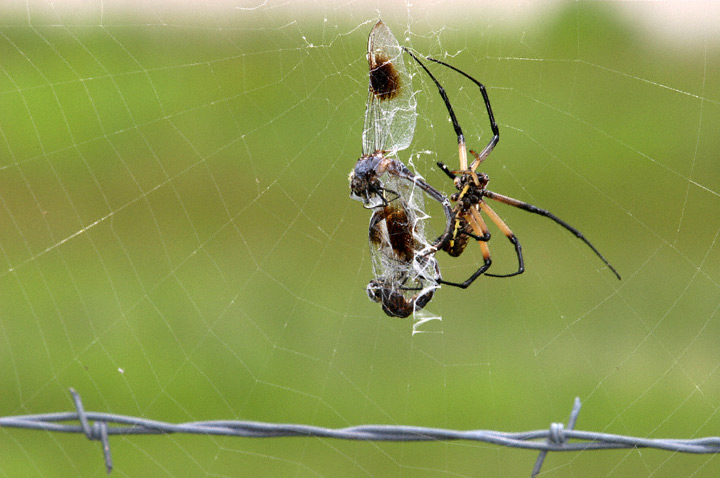 amselflies
are voracious predators, they are often also a nutrient
source for many larger organisms near or in the water.
Studies and data about the interactions between fish and
damselflies imply that fish, such as the
Largemouth Bass, are the main predatory organism in
relation to damselflies, but this is not the case! In
fact, birds, ants, and spiders account for almost ¾ of the
damselflies’ mortalities.
amselflies
are voracious predators, they are often also a nutrient
source for many larger organisms near or in the water.
Studies and data about the interactions between fish and
damselflies imply that fish, such as the
Largemouth Bass, are the main predatory organism in
relation to damselflies, but this is not the case! In
fact, birds, ants, and spiders account for almost ¾ of the
damselflies’ mortalities.
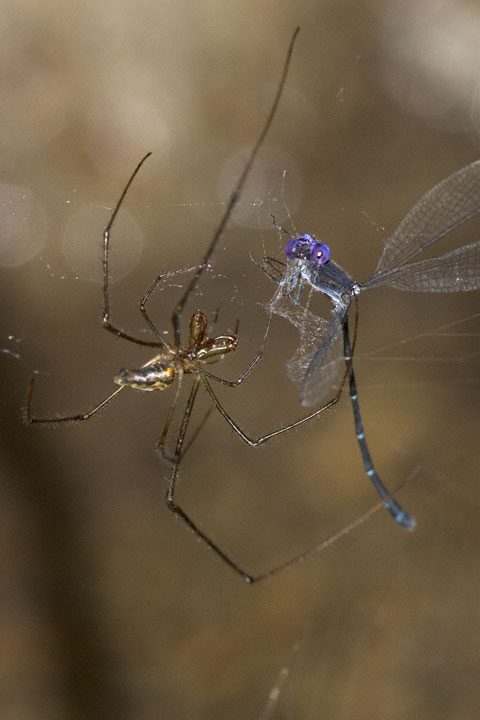 Spiders
focus on damselflies when they take their first flight after
hatching from the naiad form; at this point, the damselfly
is probably not as strong as an experienced adult and is
more susceptible to becoming prey. Bird species like
the
Wood Duck or
Mallard may choose to nest and raise families in areas
with high concentrations of damselflies. By nesting in
these areas, the ducks have access to larger food items for
their young. When fish are absent from the aquatic
environment, the
Tree Swallow thrives on damselfly adults especially when
feeding nestlings. One study found that the prevalence
of damselfly adults in an area strongly influenced the
eating and foraging patterns of four
Red-winged Blackbird species.
Spiders
focus on damselflies when they take their first flight after
hatching from the naiad form; at this point, the damselfly
is probably not as strong as an experienced adult and is
more susceptible to becoming prey. Bird species like
the
Wood Duck or
Mallard may choose to nest and raise families in areas
with high concentrations of damselflies. By nesting in
these areas, the ducks have access to larger food items for
their young. When fish are absent from the aquatic
environment, the
Tree Swallow thrives on damselfly adults especially when
feeding nestlings. One study found that the prevalence
of damselfly adults in an area strongly influenced the
eating and foraging patterns of four
Red-winged Blackbird species.
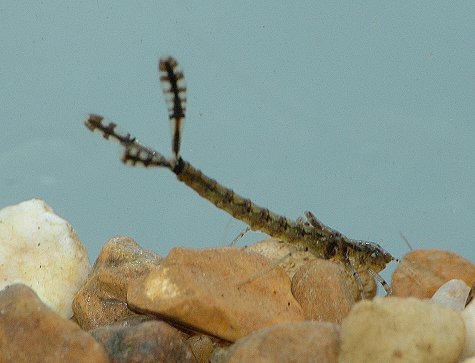 The naiads do not have a free pass from predation,
though, because there are large aquatic insects that choose
to feed on the naiads. The
Giant water bug (Order Hemiptera) feed on damselfly naiads because they can
physically overtake them.
Predaceous diving beetles
(Order Coleoptera) also pose a threat to naiads in their
aquatic environment.
The naiads do not have a free pass from predation,
though, because there are large aquatic insects that choose
to feed on the naiads. The
Giant water bug (Order Hemiptera) feed on damselfly naiads because they can
physically overtake them.
Predaceous diving beetles
(Order Coleoptera) also pose a threat to naiads in their
aquatic environment.
Parasitic wasps plague damselflies too. Polynema is one of the smallest insects identified by mankind and could hide under the dot at the end of the sentence. The parasitic wasp swims until it discovers damselfly egg clusters; it then proceeds to lay one of its own eggs into each of the damselfly’s eggs. Unfortunately for the damselfly, the wasp eggs hatch, and the larva eats the damselfly’s eggs for nutrients.
Ready for some fun facts? You can use them to surprise your friends with how much you know about damselflies!
